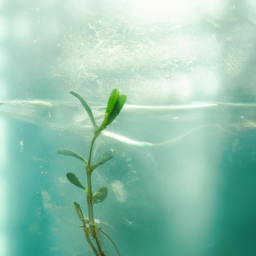
Benefits of Best Indoor Plants for Home Decor
Introduction
Indoor plants not only add a touch of greenery to your home decor but also offer numerous benefits that contribute to a healthier and more pleasant living environment. These plants have the power to purify the air, reduce stress levels, and improve overall well-being. In this article, we will explore the various benefits of incorporating the best indoor plants into your home decor.
Air Purification
Indoor air pollution is a significant concern in many households. Harmful toxins and pollutants can accumulate in enclosed spaces, leading to various health issues. However, certain indoor plants act as natural air purifiers, effectively removing these pollutants and improving air quality. The best indoor plants for air purification include the Peace Lily, Snake Plant, and Spider Plant.
The Peace Lily (Spathiphyllum) is not only visually appealing but also excels at filtering harmful toxins like formaldehyde, benzene, and trichloroethylene from the air. It thrives in low light conditions, making it an ideal choice for areas with limited sunlight.
The Snake Plant (Sansevieria), also known as Mother-in-Law’s Tongue, is another excellent air purifier. It converts carbon dioxide into oxygen during the night, making it a perfect bedroom companion. Additionally, it effectively filters out toxins like formaldehyde, xylene, and toluene.
The Spider Plant (Chlorophytum comosum) is a popular choice among indoor gardeners due to its resilience and air-purifying abilities. It removes harmful pollutants like formaldehyde and carbon monoxide from the air, making it beneficial for those living in urban areas or near busy roads.
Stress Reduction
In today’s fast-paced world, stress has become a common companion for many individuals. However, incorporating the best indoor plants into your home decor can help create a calming and serene atmosphere, reducing stress levels and promoting relaxation.
The Lavender plant (Lavandula) is known for its soothing fragrance, which has been proven to reduce anxiety and promote better sleep. Placing a pot of lavender in your bedroom or living room can create a tranquil environment, perfect for unwinding after a long day.
The Aloe Vera plant (Aloe barbadensis) not only offers various health benefits but also has a calming effect on the mind. Its gel can be used to treat minor burns and skin irritations, providing instant relief. Additionally, the presence of an Aloe Vera plant in your home can create a sense of tranquility and well-being.
The Jasmine plant (Jasminum) is renowned for its delightful fragrance, known to have a positive impact on mood and overall well-being. Its scent has been linked to reduced anxiety levels, making it an excellent choice for those seeking stress relief.
Improved Well-being
Indoor plants have a remarkable ability to improve overall well-being and create a more pleasant living environment.
The Boston Fern (Nephrolepis exaltata) is a popular choice for indoor gardening enthusiasts. It not only adds a touch of elegance to any space but also acts as a natural humidifier, increasing moisture levels and reducing the risk of dry skin, sore throat, and other respiratory issues.
The Areca Palm (Dypsis lutescens) is a versatile indoor plant that not only enhances the aesthetic appeal of your home but also helps remove harmful chemicals like formaldehyde and xylene from the air. Its lush foliage creates a tropical ambiance, promoting a sense of relaxation and well-being.
The Rubber Plant (Ficus elastica) is an excellent choice for those seeking a low-maintenance indoor plant that offers numerous benefits. It improves air quality, reduces the presence of mold spores, and adds a touch of greenery to any room.
In conclusion, incorporating the best indoor plants into your home decor offers a multitude of benefits. From air purification and stress reduction to improved well-being, these plants have the power to transform your living environment into a healthier and more pleasant space. So, why not bring nature indoors and enjoy the many advantages that indoor plants have to offer?
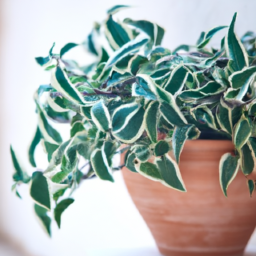
Top 5 Best Indoor Plants for Air Purification
Introduction
Indoor plants not only add beauty and freshness to your living space but also play a crucial role in purifying the air you breathe. With increasing pollution levels, it’s essential to have plants that can filter out harmful toxins and improve the overall air quality indoors. In this guide, we will explore the top 5 best indoor plants for air purification, their benefits, and how to care for them.
1. Snake Plant (Sansevieria trifasciata)
The Snake Plant, also known as Mother-in-Law’s Tongue, is a popular choice for indoor air purification. It is highly effective in removing formaldehyde, benzene, xylene, and trichloroethylene from the air. This low-maintenance plant thrives in low light conditions and requires minimal watering. Its long, sword-shaped leaves add a touch of elegance to any room.
To care for a Snake Plant, place it in indirect sunlight and water it sparingly, allowing the soil to dry between waterings. Avoid overwatering as it can lead to root rot. This plant is perfect for bedrooms and living rooms, as it releases oxygen at night, promoting better sleep quality.
Another advantage of the Snake Plant is its ability to withstand neglect and survive in various temperature conditions. It is an excellent choice for beginners or those with busy lifestyles.
2. Peace Lily (Spathiphyllum)
The Peace Lily is not only a beautiful flowering plant but also an excellent air purifier. It effectively removes formaldehyde, benzene, trichloroethylene, and ammonia from the air. Its glossy, dark green leaves and elegant white flowers make it a popular choice for indoor decor.
To care for a Peace Lily, place it in a well-lit area away from direct sunlight. Keep the soil evenly moist, but avoid overwatering. This plant thrives in higher humidity levels, so misting the leaves occasionally can help maintain optimal conditions. The Peace Lily is a great addition to bathrooms or kitchens as it can reduce mold spores in the air.
It’s important to note that the Peace Lily is toxic to pets if ingested, so it should be kept out of their reach.
3. Spider Plant (Chlorophytum comosum)
The Spider Plant is not only visually appealing but also highly effective in purifying the air. It removes formaldehyde, xylene, and toluene from the environment, making it an ideal choice for households with smokers or those living in urban areas with high pollution levels.
This plant has long, arching leaves with white stripes, giving it a unique and attractive appearance. It thrives in bright, indirect sunlight and prefers well-draining soil. The Spider Plant is known for its ability to produce “spiderettes” or small plantlets that dangle from the parent plant, making it a great choice for hanging baskets or as a trailing plant on shelves.
Keep the soil evenly moist, but avoid overwatering. The Spider Plant is relatively low maintenance and can tolerate some neglect, making it suitable for busy individuals or those new to plant care.
4. Boston Fern (Nephrolepis exaltata)
The Boston Fern is a classic choice for indoor air purification. It effectively removes formaldehyde, xylene, and toluene from the air, making it an excellent addition to any living space. Its lush green fronds and arching form create a calming and refreshing atmosphere.
To care for a Boston Fern, place it in bright, indirect sunlight and keep the soil consistently moist. This plant thrives in high humidity, so misting the leaves regularly or placing a tray of water nearby can help maintain the required moisture levels. It’s important to avoid dry air or drafts, as they can cause the fronds to dry out and turn brown.
The Boston Fern requires regular watering and benefits from occasional feeding with a balanced houseplant fertilizer. With proper care, it can be a long-lasting and beautiful addition to your indoor garden.
5. Aloe Vera (Aloe barbadensis)
Aloe Vera is not only known for its medicinal properties but also for its air purifying abilities. It effectively removes formaldehyde and benzene from the air, making it a valuable addition to any indoor environment. Its succulent leaves contain a gel that can be used for various skin ailments.
To care for an Aloe Vera plant, place it in bright, indirect sunlight and allow the soil to dry out completely between waterings. Aloe Vera plants are drought-tolerant and prefer well-draining soil. Overwatering can lead to root rot, so it’s essential to avoid excessive moisture.
In addition to its air purifying benefits, Aloe Vera plants are relatively low maintenance and can thrive in various temperature conditions. They make excellent additions to kitchens or living rooms, adding a touch of greenery while providing a natural remedy for minor burns and skin irritations.
Conclusion
Indoor plants not only enhance the aesthetic appeal of your home but also contribute to a healthier living environment by purifying the air. The top 5 best indoor plants for air purification, including the Snake Plant, Peace Lily, Spider Plant, Boston Fern, and Aloe Vera, offer a range of benefits and are relatively easy to care for. By incorporating these plants into your indoor space, you can enjoy cleaner air and a more refreshing atmosphere.
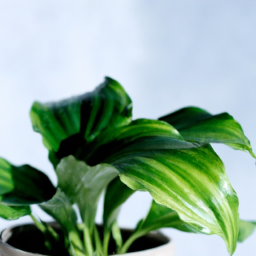
Choosing the Best Indoor Plants for Low Light Conditions
Indoor plants not only add beauty to your living space but also purify the air and create a calming environment. However, not all indoor plants thrive in low light conditions. If you have a room with limited natural light, fret not! There are several stunning plants that can thrive in low light environments. In this guide, we will explore the best indoor plants that are perfect for low light conditions.
1. Snake Plant
The Snake Plant, also known as Sansevieria or Mother-in-Law’s Tongue, is an excellent choice for low light areas. It is a hardy plant that can withstand neglect and low light conditions. This plant has long, upright leaves that come in various shades of green and yellow. Snake Plants are known for their air-purifying qualities, making them a great addition to any indoor space.
When caring for a Snake Plant, it is important to avoid overwatering. These plants prefer drier conditions and can tolerate infrequent watering. Place your Snake Plant in a spot with indirect sunlight, such as a corner away from windows, and watch it thrive even in low light conditions.
If you’re looking for a low-maintenance plant that adds a touch of elegance to your home, the Snake Plant is an excellent choice.
2. ZZ Plant
The ZZ Plant, scientifically known as Zamioculcas zamiifolia, is another fantastic option for low light environments. This plant has glossy, dark green leaves that grow in a graceful, upright manner. The ZZ Plant is renowned for its ability to tolerate low light, drought, and neglect, making it an ideal choice for busy individuals or those with limited natural light in their homes.
When it comes to caring for a ZZ Plant, less is more. These plants prefer to be under-watered rather than over-watered. Allow the soil to dry out completely between waterings to prevent root rot. Place your ZZ Plant in a room with indirect or low light, and it will thrive without much intervention.
The ZZ Plant is not only a great addition to low light areas but also a natural air purifier, helping to improve the air quality in your home.
3. Pothos
Pothos, also known as Devil’s Ivy, is a popular trailing plant that can thrive in low light conditions. It features heart-shaped leaves in various shades of green, making it a visually appealing choice for any indoor space. Pothos is known for its ability to purify the air by removing toxins, making it a healthy addition to your home.
Caring for a Pothos plant is relatively easy. It can tolerate low light but prefers bright, indirect light. Water your Pothos when the top inch of soil feels dry, and be sure not to overwater. Overwatering can lead to root rot, which can harm the plant.
Place your Pothos in a hanging basket or allow it to trail down from a shelf to create a beautiful cascading effect. This versatile plant is an excellent choice for low light areas and can bring life to any room.
Now that you have discovered the best indoor plants for low light conditions, you can transform your dimly lit spaces into thriving green havens. Remember to consider the specific care requirements of each plant and find the perfect spot in your home to showcase their beauty. Happy gardening!
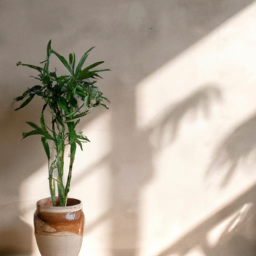
Best Indoor Plants for Beginners: Easy to Care for Options
Are you new to indoor gardening and looking for the best plants that are easy to care for? Well, you’ve come to the right place! In this guide, we will explore some of the top indoor plants that are perfect for beginners. These plants not only add beauty and freshness to your home but also require minimal effort to thrive. Let’s dive in and discover the best indoor plants for beginners!
1. Snake Plant (Sansevieria trifasciata)
The Snake Plant, also known as Mother-in-law’s Tongue, is one of the most popular choices for beginners. This plant is incredibly resilient and can tolerate a wide range of growing conditions, including low light and infrequent watering. Its long, upright leaves with variegated patterns make it an attractive addition to any room.
Snake Plants are known for their air-purifying qualities, as they can remove toxins like formaldehyde and benzene from the air. They are also excellent for bedrooms, as they release oxygen at night, promoting better sleep. To care for a Snake Plant, place it in indirect sunlight and water it sparingly, allowing the soil to dry out between waterings.
Another advantage of Snake Plants is that they are low-maintenance when it comes to pest control. They are rarely affected by pests, making them an ideal choice for beginners who want hassle-free plants.
2. Pothos (Epipremnum aureum)
Pothos is another fantastic indoor plant for beginners due to its hardiness and adaptability. It is commonly known as Devil’s Ivy and is famous for its trailing vines with heart-shaped leaves. Pothos plants come in various color variations, including green, golden, and variegated.
One of the reasons why Pothos is highly recommended for beginners is its ability to thrive in low light conditions. It can tolerate a wide range of lighting, from bright indirect light to dim corners. This makes it an excellent choice for rooms with limited sunlight.
Pothos plants are also forgiving when it comes to watering. They can withstand occasional forgetfulness and can even recover from underwatering or overwatering. However, it’s essential to let the soil dry out partially between waterings to prevent root rot.
With its lush foliage and easy-going nature, Pothos is an excellent addition to any indoor space. It can be grown in hanging baskets or placed on shelves, adding a touch of greenery to your home.
3. ZZ Plant (Zamioculcas zamiifolia)
If you’re looking for a plant that requires almost no attention, the ZZ Plant is the perfect choice. This plant is known for its glossy, dark green leaves that grow in a graceful, upright manner. The ZZ Plant can tolerate a wide range of conditions, including low light, drought, and neglect.
One of the standout features of the ZZ Plant is its ability to survive in areas with minimal natural light. It can thrive in fluorescent lighting, making it an excellent option for offices or rooms with few windows. The ZZ Plant also has a unique water storage system in its rhizomes, allowing it to withstand long periods without water.
When it comes to care, the ZZ Plant prefers to be left alone. It is best to underwater rather than overwater this plant, as excessive moisture can lead to root rot. Simply place it in a well-draining potting mix and water it sparingly, only when the soil is completely dry.
4. Spider Plant (Chlorophytum comosum)
The Spider Plant is a classic choice for beginners, thanks to its resilience and adaptability. It is named after its long, arching leaves that resemble spider legs. Spider Plants are not only easy to care for but also have air-purifying properties.
Spider Plants thrive in bright, indirect light but can tolerate lower light conditions as well. They prefer well-draining soil and should be watered when the top inch of soil feels dry. Spider Plants are known for producing offshoots called “spiderettes,” which can be easily propagated to create new plants.
One of the unique features of Spider Plants is their ability to remove toxins like formaldehyde and xylene from the air, making them a popular choice for improving indoor air quality. They are also safe for pets, so you can enjoy their beauty without worrying about your furry friends.
In conclusion, these four indoor plants – Snake Plant, Pothos, ZZ Plant, and Spider Plant – are excellent choices for beginners. They are not only aesthetically pleasing but also require minimal care and can adapt to various growing conditions. Whether you have limited sunlight or tend to forget watering, these plants will thrive and bring life to your indoor space. So go ahead and start your indoor gardening journey with these easy-to-care-for options!
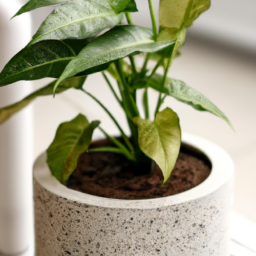
Best Indoor Plants for Pet Owners: Non-Toxic Options
As a pet owner, it is important to create a safe and pet-friendly environment in your home. Indoor plants not only add beauty and freshness to your living space but also provide numerous health benefits. However, not all plants are safe for pets, as some can be toxic if ingested. In this article, we will explore the best indoor plants for pet owners that are non-toxic options, ensuring the well-being of both your beloved pets and your home’s aesthetics.
1. Spider Plant (Chlorophytum comosum)
The Spider Plant is a popular choice among pet owners due to its non-toxic nature. This plant features long, arching leaves with green and white stripes, creating an eye-catching display. Spider Plants are known for their air-purifying qualities, removing toxins like formaldehyde and carbon monoxide from the air.
These plants are relatively easy to care for and can thrive in various lighting conditions, making them perfect for indoor environments. Spider Plants prefer indirect sunlight and well-draining soil. They are also known for their ability to produce small, white flowers and baby spiderettes, which can be propagated to expand your plant collection.
To ensure the safety of your pets, place Spider Plants in hanging baskets or on high shelves, as their dangling leaves may be tempting for curious cats or dogs to play with. If ingested, Spider Plants are generally non-toxic and cause only mild digestive upset.
2. Boston Fern (Nephrolepis exaltata)
The Boston Fern is a classic and elegant choice for pet owners seeking non-toxic indoor plants. With its lush, feathery fronds, this fern adds a touch of natural beauty to any room. Besides its aesthetic appeal, Boston Ferns also act as natural air humidifiers, promoting a healthier indoor environment.
These ferns thrive in bright, indirect light and high humidity levels. Keep the soil consistently moist but avoid overwatering to prevent root rot. Mist the fronds regularly or place the plant on a tray filled with pebbles and water to increase humidity levels.
While Boston Ferns are generally safe for pets, some animals may experience mild stomach upset if they consume large quantities of the plant. It is always advisable to monitor your pets’ behavior around plants and seek veterinary assistance if any unusual symptoms occur.
3. Areca Palm (Dypsis lutescens)
The Areca Palm, also known as the Butterfly Palm, is a pet-friendly indoor plant that adds a tropical touch to your home decor. With its graceful, feathery fronds and slender appearance, this palm variety is a favorite among interior designers.
Areca Palms thrive in bright, indirect light and well-draining soil. They prefer slightly moist soil, so water them when the top inch of soil feels dry. These palms also act as natural humidifiers, making them ideal for dry indoor environments.
While Areca Palms are generally safe for pets, it is important to note that the plant’s leaves can be sharp. To prevent any accidental injuries, place the palm out of your pets’ reach. If ingested, Areca Palms are non-toxic and should only cause mild digestive upset.
Remember, even though these plants are considered non-toxic, individual pets may have different sensitivities or allergies. It is always best to observe your pets’ behavior around plants and consult with a veterinarian if you have any concerns.
By incorporating these non-toxic indoor plants into your home, you can create a pet-friendly environment that enhances the beauty of your living space while ensuring the safety and well-being of your beloved pets.
Frequently Asked Questions (FAQ)
1. What are the best indoor plants for beginners?
Some of the best indoor plants for beginners include pothos, snake plant, peace lily, and spider plant.
2. Which indoor plants require low light conditions?
Indoor plants that thrive in low light conditions include ZZ plant, cast iron plant, and parlor palm.
3. What are some air-purifying indoor plants?
Some air-purifying indoor plants include aloe vera, snake plant, spider plant, and peace lily.
4. How often should I water my indoor plants?
The watering frequency varies depending on the type of plant, but as a general guideline, most indoor plants should be watered when the top inch of soil feels dry.
5. Can indoor plants improve indoor air quality?
Yes, certain indoor plants have the ability to improve indoor air quality by filtering out toxins and releasing oxygen.
6. What are some pet-friendly indoor plants?
Some pet-friendly indoor plants include Boston fern, spider plant, areca palm, and money tree.
7. How can I prevent common indoor plant pests?
To prevent common indoor plant pests, make sure to regularly inspect your plants, keep them clean, avoid overwatering, and isolate any infested plants.
8. Do indoor plants require fertilizer?
Yes, indoor plants generally benefit from regular fertilization. However, the frequency and type of fertilizer may vary depending on the plant species.
9. Can indoor plants thrive in small spaces?
Absolutely! Many indoor plants are well-suited for small spaces, such as succulents, air plants, and small ferns.
10. How can I choose the right indoor plants for my home?
When choosing indoor plants for your home, consider factors such as lighting conditions, available space, and your personal preferences. Researching the specific care requirements of each plant is also important.
Dr. Olivia Green is a botanist with over two decades of experience in indoor plant cultivation. She holds a Ph.D. in Plant Biology and has dedicated her career to researching plant behavior in controlled environments. Dr. Green is passionate about helping plant enthusiasts master the art of indoor gardening through her extensive knowledge and practical insights.


